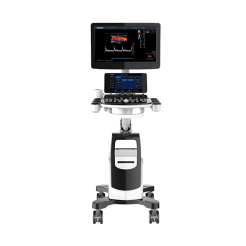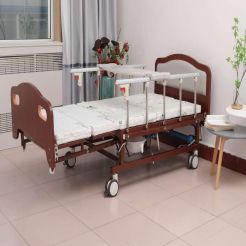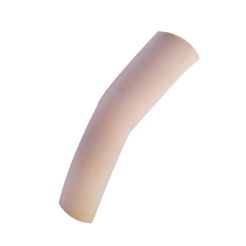Arbutin/β Arbutin/α Arbutin Powder
<p>Specification:99%</p> <p>Alias:P-hydroxyphenyl β - D-pyranoside</p> <p>CAS:497-76-7</p> <p>Appearance:White crystalline powder</p> <p>Molecular Formula:C12H16O7</p> <p>Molecular Weight:272.251</p> <p>Boiling Point:561.6 ℃</p> <p>Melting Point:195~198 ℃</p> <p>Density:1.556 g/cm³</p> <p>Flash Point:293.4 ℃</p> <p>Water Solubility:10-15 g/100 mL at 20 ºC</p>
Product Description
Arbutin/β Arbutin/α Arbutin Powder

Arbutin, chemical name 4-hydroxyphenyl-D-glucopyranoside, it is an ingredient extracted from the Bearberryleaves of the BearberryBRhododendron family plant Ursolin. It can inhibit the activity of tyrosinase in the body, prevent the generation of melanin, reduce skin pigment deposition, remove pigmentation and freckles, and also have bactericidal and anti-inflammatory effects. It is mainly used in cosmetics.
The main factor determining the depth of skin color is the content and distribution of melanin in the skin, which is produced within the melanocytes in the basal layer of the skin epidermis. The initial raw material for melanin formation, tyrosine, undergoes a series of complex biochemical reactions under the action of tyrosinase, ultimately forming melanin. It transfers from the basal layer to the outer layer of the epidermis through synapses, coloring the skin and forming pigmentation spots.
In the process of melanin formation, as the main rate limiting enzyme, the activity of tyrosinase determines the amount of melanin formation. Tyrosinase has tyrosine hydroxylase activity (catalyzing tyrosine → dopa) and dopa oxidase activity (catalyzing dopa → dopaquinone), and is a key factor in the synthesis of melanin by melanocytes.
熊果苷依结构不同可分为α型和β型。α-熊果苷化学名为 4-羟基苯基-α-D-吡喃葡萄糖苷,β-熊果苷化学名为4-羟基苯基-β-D-吡喃葡萄糖苷。α-熊果苷为β-熊果苷的差向异构体,其糖苷键在空间上的方向与β-熊果苷相反。

And arbutin is a tyrosinase inhibitor that can effectively inhibit tyrosinase activity within the non-toxic concentration range of melanocytes and without affecting cell proliferation concentration. By directly binding with tyrosinase, it competes for the binding site of dopamine, blocks the synthesis of dopamine and dopaquinone, and interferes with melanocytes, inhibiting melanin production. At the same time, it also has the function of lightening the formed melanin, accelerating the decomposition and excretion of melanin, reducing skin pigment deposition, and removing pigmentation and freckles.
熊果苷依结构不同可分为α型和β型。α-熊果苷化学名为 4-羟基苯基-α-D-吡喃葡萄糖苷,β-熊果苷化学名为4-羟基苯基-β-D-吡喃葡萄糖苷。α-熊果苷为β-熊果苷的差向异构体,其糖苷键在空间上的
Arbutin can be classified into alpha and beta types based on its structure. The chemical name of α - arbutin is 4-hydroxyphenyl - α - D-glucopyranoside, while the chemical name of β - arbutin is 4-hydroxyphenyl - β - D-glucopyranoside. α - arbutin is an epimer of β - arbutin, and its glycosidic bonds have the opposite spatial direction to β - arbutin.
Specifications:
|
Product Name |
Arbutin/β Arbutin/α Arbutin Powder |
|
Alias |
P-hydroxyphenyl β - D-pyranoside |
| Test Method | HPLC |
|
CAS |
497-76-7 |
|
EINECS |
207-850-3 |
|
Appearance |
White crystalline powder |
|
Molecular Formula |
C12H16O7 |
|
Molecular Weight |
272.251 |
|
Boiling Point |
561.6 ℃ |
|
Melting Point |
195~198 ℃ |
|
Density |
1.556 g/cm³ |
|
Flash Point |
293.4 ℃ |
|
Water Solubility |
10-15 g/100 mL at 20 ºC |
|
Source |
It exists in many plants, including the whole plant of the Tiger Ear Grass family and the leaves of the Rhododendron family's Vaccinium. |
|
Storage |
Seal and store in a well ventilated and dry environment. |
|
Usage |
Cosmetics |
Molecular structure data:
1. Molar refractive index: 63.84
2. Molar volume (cm3/mol): 174.9
3. Isometric specific volume (90.2K): 512.2
4. Surface tension (dyne/cm): 73.4
5. Polarization rate (10-24cm3): 25.30
Computational Chemistry Data:
1. Reference value for hydrophobic parameter calculation (XlogP): -0.7
2. Number of hydrogen bond donors: 5
3. Number of hydrogen bond receptors: 7
4. Number of rotatable chemical bonds: 3
5. Number of variants: 2
6. Topological molecular polarity surface area (TPSA): 120
7. Number of heavy atoms: 19
8. Surface charge: 0
9. Complexity: 279
10. Isotope atomic number: 0
11. Determine the number of atomic structure centers: 5
12. Uncertain number of atomic structure centers: 0
13. Determine the number of chemical bond stereocenters: 0
14. Uncertain number of chemical bond stereocenters: 0
15. Number of covalent bond units: 1
Methods of Production:
Natural plant extraction
Arbutin is a naturally occurring active substance, and extracting it from plants containing arbutin is a feasible method. This method mainly uses the leaves of plants in the genus Ursa as raw materials, and uses organic solvent extraction, extraction, column chromatography and other separation and purification methods to obtain the extract of arbutin. As early as 1930, reports indicated that arbutin was found in the leaves of thick leaved rock cabbage. Subsequently, arbutin was discovered in the leaves of black rice trees, blueberries, bear fruits, and pear trees.
Due to the low content of arbutin in plants, complex extraction processes, and low purity of extracted products, the extraction cost is relatively high. With the development of other preparation methods, plant extraction methods have gradually lost their competitive advantage.
Plant tissue culture
The plant tissue culture method utilizes the glycosylation ability of plant cells to convert hydroquinone into arbutin. Compared with plant extraction, obtaining arbutin from plant tissue culture is much more efficient. The selection of efficient plant tissue culture medium and the determination of suitable culture conditions are crucial for preparing arbutin using this method. The conversion rate of hydroquinone varies greatly among different types of plant tissue cultures.
The raw materials used in plant tissue culture method are clean, with high conversion rate and pollution-free production, but the production cycle is long. Separation and purification are complex, and their development is not yet very mature. There are many factors that affect plant culture, such as the type, strain, and growth stage of the plant culture. Further understanding the growth mechanism of plant cells and identifying the key influencing factors in the synthesis process is necessary to shorten the production cycle and improve yield.
Enzyme synthesis method
Enzymatic synthesis mainly uses glycosyltransferases or glycosidases as catalysts to catalyze glycosylation and reverse hydrolysis reactions to synthesize glycosides. Therefore, arbutin can also be obtained from hydroquinone and glucose under the catalysis of glycosidases.
The enzyme synthesis method has a simple process, high synthesis efficiency, and very optimistic development prospects. With the in-depth research of this method in recent years, more and more suitable enzyme sources have been discovered, and the yield of arbutin is also increasing. Enzyme synthesis method is one of the main research directions for the future synthesis of arbutin.
Chemical synthesis method
The general step in chemical synthesis of arbutin is mainly to use glucose and hydroquinone as raw materials, undergo glycosylation reaction after appropriate protection, and then remove the protective group to obtain it.
The chemical synthesis method, with its advantages of good product quality and low production cost, remains the main method for preparing arbutin, and has achieved industrial production both domestically and internationally. In recent years, with the in-depth research on new processes for the synthesis of arbutin, the steps for synthesizing arbutin have gradually been simplified, and the yield has also been continuously improved. Through continuous improvement, the industrial production of arbutin in China has achieved a product content of over 99.5% and quality has reached the international advanced level. At present, anhydrous glucose is generally used as raw material in China to produce β - arbutin through acylation protection, catalytic condensation, and alkaline hydrolysis. It has the characteristics of high equipment utilization, safe production operation, high product yield, good quality, and low environmental pollution. In addition, due to the poor stereoselectivity of the products in chemical synthesis methods, further research is still needed to find efficient and specific chemical synthesis methods for preparing alpha arbutin.
Safety:
Hydroquinone, due to its ability to inhibit tyrosinase, was initially used in freckle removal and whitening cosmetics to reduce skin pigmentation. However, research has found that hydroquinone poses a risk of exogenous melasma and vitiligo, and even poses a potential risk of sensitization and cancer. Therefore, it has been listed as a banned component in cosmetics in China. Arbutin is also a tyrosinase inhibitor with whitening effects and is a substitute for hydroquinone. Under conditions such as low pH, high temperature, UV irradiation, or under the action of human skin microorganisms or glucosidases, arbutin may be converted into hydroquinone, leading to potential risks of sensitization, genotoxicity, or carcinogenesis. Therefore, the safety research of arbutin has always been a focus of industry attention.
On February 1, 2023, the Scientific Committee on Consumer Safety (SCCS) of the European Union issued its final opinion on the safety of alpha arbutin and beta arbutin in cosmetics (SCCS/1642/22), and the conclusion is as follows:
SCCS believes that the maximum safe use concentration of α - arbutin in face cream is 2%, and the maximum safe use concentration of α - arbutin in body milk is 0.5%. It is also safe to use both at the same time;
The maximum safe concentration of β - arbutin in face cream is 7%;
In products containing alpha arbutin or beta arbutin, the content of hydroquinone should be kept as low as possible and not higher than the inevitable trace amounts in both arbutins. In the latest study submitted by the applicant, the quantification limit (LOQ) of hydroquinone is 3ppm, and the detection limit (LOD) is 1ppm;
The total exposure of α - arbutin (2% in face cream, 0.5% in body lotion) and β - arbutin (7% in face cream) is safe.
Certificates:
Package:
 |
 |
 |
|
5 Grams to 2kg Packaging: Alu-bag |
5 KG/Al-Tin Packaging: 2 pcs Alu-tin with box |
25 KG, Packaging: Drum (54*37*37cm)=0.07CBM N.W:25KG / G.W:28KG |
Delivery:

Why Choose Us
Contact Us
Whether you'd like to get more info on what, why and how we do what we do, need help with what you're
creating, would like to partner up or just say hi! ---we'd love to hear from you!
Email: sales@greenspringbio.com
Tel.: +86 132 2777 5215
Fax: +86-29-88328052
Whatsapp: +8613227775215
Add.: China Office Add: Floor 14 Suite B, HuiXin IBC, No.1 Zhang Ba 1 Road, Hi-tech Development Zone, Xi'an. China.
Add.: France Office Add: 149 Avenue DU MAINE 75014 PARIS 14 Phone: +33 659468007












